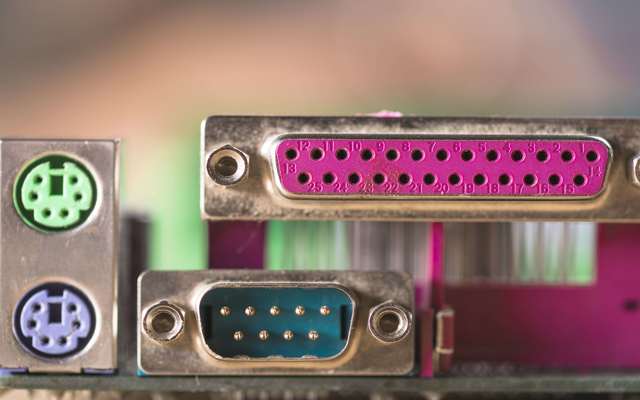1. What is the DIO Direct Input Output Interface?
DIO (Digital Input/Output) interface is the abbreviation of digital input/output interface, which is mainly used to process the input and output of digital signals. DIO Direct Input Output Interface can detect digital signals from external devices or send control signals to external devices. This type of interface is widely used in industrial automation, embedded systems, measurement and control to realize the control and monitoring of external devices.
The main feature of DIO Direct Input Output Interface is that they can perform both input and output functions simultaneously, thus enabling bi-directional communication between devices. This design makes DIO interfaces very reliable in industrial environments and able to cope with complex and changing working environments.
2. The classification and technical standards of DIO Direct Input Output Interface
Classificatie volgens isolatiemodus
Afhankelijk van de elektrische isolatiefunctie kan de DIO-interface worden onderverdeeld in een geïsoleerd en een niet-geïsoleerd type. Geïsoleerde DIO-interface maakt gebruik van fotokoppeling en andere technologieën om de ingangs-/uitgangssignalen elektrisch te isoleren, waardoor elektrische ruis, aardpotentiaalverschillen en andere interferentie met het apparaat wordt voorkomen. Dit isolatieontwerp kan het anti-interferentievermogen en de betrouwbaarheid van de apparatuur verbeteren en is vooral geschikt voor industriële veldtoepassingen.
Classificatie per niveautype
According to the level type of input/output signals, DIO interfaces can be categorized into TTL level (5V), LVTTL level (3.3V), 24V industrial level, etc. TTL and LVTTL are commonly used in the interface design of computers and embedded systems, whereas 24V level is suitable for the industrial control field for communicating with PLCs, sensors, and other industrial devices.
Indeling naar signaalrichting
DIO Direct Input Output Interface can be categorized into unidirectional inputs, unidirectional outputs and bidirectional interfaces. Unidirectional input interfaces are used to receive status information from external devices, such as the switching status of sensors; unidirectional output interfaces are used to send control signals, such as driving relays or motors. Bidirectional interfaces can be flexibly configured as inputs or outputs as needed, providing greater flexibility.

3. Technical standards and application requirements for DIO Direct Input Output Interface
Elektrische normen en interfaceniveaus
Het ontwerp van DIO-interfaces moet voldoen aan de relevante elektrische standaarden om compatibiliteit tussen verschillende apparaten te garanderen. Veelgebruikte standaarden voor het niveau van DIO-interfaces zijn bijvoorbeeld TTL-niveau (0-5V), CMOS-niveau (0-3,3V), 24V industrieel niveau enzovoort. Elke standaard heeft een andere niveaudefinitie en het ontwerp moet de juiste niveaustandaard kiezen op basis van het toepassingsscenario.
Reactiesnelheid en anti-interferentievermogen
Bij industriële automatiseringsbesturing heeft de reactiesnelheid van de DIO-interface rechtstreeks invloed op het real-time besturingssysteem. Bij het ontwerp is het meestal nodig om het vermogen van het signaal om interferentie tegen te gaan te verbeteren door middel van hardwarefiltering, optocoupler-isolatie en andere middelen om de nauwkeurigheid van het signaal te garanderen. In de industrie moet de DIO-interface bijvoorbeeld elektromagnetische interferentie, spanningspieken en andere ongunstige factoren aankunnen.
Signaalverwerking en correctiefunctie
In order to prevent external signal interference from causing false triggering, many DIO interface designs introduce a digital filtering function that is capable of filtering out high-frequency noise or mechanical jitter from the signal. This design is particularly suitable for applications where there is a large amount of signal switching or the presence of mechanical equipment.
4. Application of DIO Direct Input Output Interface in different fields
Industriële Automatisering
De DIO-interface kent een groot aantal toepassingen in de industriële automatisering. Het kan bijvoorbeeld verschillende sensoren, schakelaars, actuatoren en andere apparaten aansluiten om realtime bewaking en automatiseringscontrole van industriële sites te realiseren. Veelvoorkomende toepassingsscenario's zijn robotbesturing, bewaking van productielijnen en statusdetectie van apparatuur.
Ingebed systeem en computerinterface
In embedded systemen en computers worden DIO-interfaces gebruikt voor communicatie en besturing met externe apparaten. Bijvoorbeeld in microcontrollers of industriële controllers kan de DIO interface interactie realiseren met externe sensoren, displays en andere apparaten door middel van eenvoudige digitale signalen.
Bewaking van medische apparatuur en instrumenten
DIO-interfaces worden ook veel gebruikt in medische apparatuur voor het aansluiten van verschillende soorten sensoren en bewakingsinstrumenten om real-time bewaking van de patiëntstatus en controle van alarmsystemen te realiseren. De hoge betrouwbaarheid en het anti-interferentie vermogen van deze interfaces kunnen de normale werking van medische apparatuur in complexe omgevingen garanderen.
Samenvatting
Als digitale ingang/uitgang-interface heeft de DIO-interface een goede betrouwbaarheid, stabiliteit en flexibiliteit. De toepassingen bestrijken een groot aantal gebieden, zoals industriële automatisering, ingebedde systemen, medische apparatuur enzovoort. Volgens verschillende technische standaarden zoals elektrische isolatie, interfaceniveau, signaalverwerking enzovoort, kan de DIO-interface worden aangepast aan verschillende werkomgevingen en toepassingsvereisten. Met de vooruitgang van de technologie zal de DIO-interface in de toekomst intelligenter en meer gestandaardiseerd zijn en efficiëntere oplossingen bieden voor digitale besturing en signaaloverdracht in diverse industrieën.